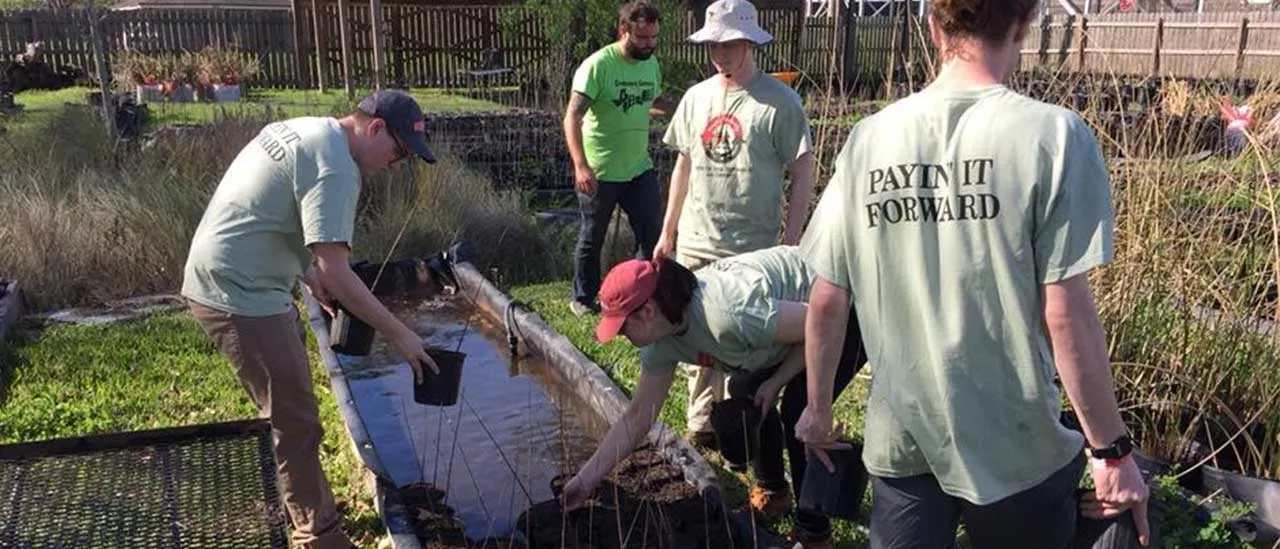Eighteen students got hands-on experience with wetlands restoration during a service-learning trip in New Orleans’ Lower Ninth Ward last week.
Working with a nonprofit organization called Common Ground Relief, the students planted hardy, fast-growing native plants and removed invasive species in coastal areas imperiled by hurricanes, development and engineering projects that have eroded land and endangered wildlife. They planted thousands of Cypress trees, visited the levy that broke during Hurricane Katrina, and even rescued an abandoned dog that was starving in the wetlands.
~Skylar Claud, environmental sustainability major
“Many people in the U.S., and even in Louisiana, aren’t aware just how much of the wetlands we are losing,” said Skylar Claud, an environmental sustainability major from Leicester, NY. “My favorite part of the trip was being able to go into the wetlands and replant trees and grass in waist-deep muck. This experience made me realize just how important it is for humans to coexist with the environment."
The New Orleans trip is a component of Geography 384: Disaster Geographies, a course taught by Associate Professor Wendy Lascell, who accompanied the students, along with Linda Drake, director of the college’s Center for Social Responsibility and Community. Lascell has taken several groups of students to New Orleans for similar trips.
"On these service-learning trips, students gain invaluable experience for both academic and personal growth," said Lascell. "They are engaged in service, immersed in an unfamiliar culture, and confronted with real-world problems that don't have easy solutions. They get to be a part of the solutions while they learn about the complexities and challenges faced by communities.
"This course is designed to expose students to both environmental and cultural geographies, bringing the classroom to life. They cannot learn in a classroom what they gain from real-world immersion. One of my favorite moments is when a student realizes that the easy solutions they construct in the classroom will never work in reality. This process is crucial in preparing our students for the job market."
In conjunction with the service activities, students immersed themselves in New Orleans culture. They visited an old plantation, went to the Lower 9th Ward Museum and toured the Jean Lafitte National Historical Park and Preserve. The students returned to New York on March 4 with stories to tell and photographs to show.
"My favorite part of the trip was experiencing the different culture that envelopes New Orleans," said Dakota Bailey, an environmental sustainability major from Kingston, NY. "In NOLA, there is still a very strong connection to French heritage. ... It is also very evident to see the impacts Katrina still has to this day in NOLA. There is still much to be done, and overall, the most important lesson is that there's no simple and easy fix for that."
